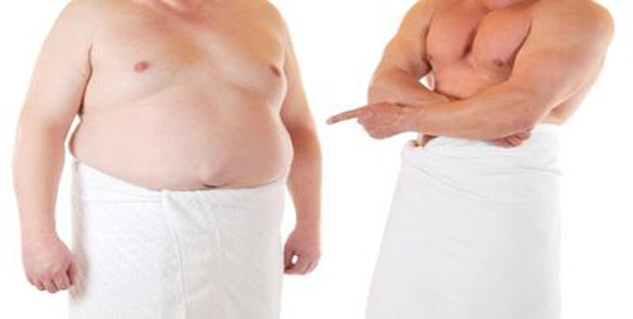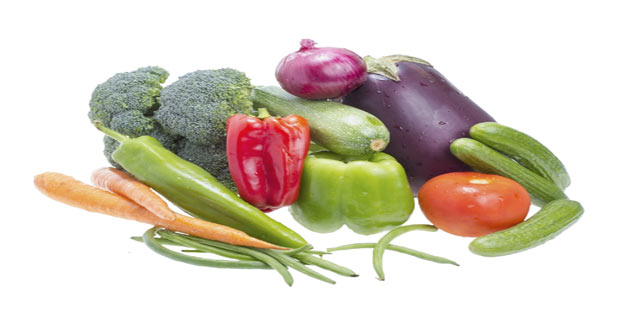The 6 Best Teas for Weight Loss
Historical evidence shows that the Chinese, during the Tang Dynasty (618 - 907), used to store tea in square paper bags to preserve its flavor.A hectic lifestyle and tempting advertisements compel us to consume drinks that contain excess sugar and harmful chemicals. The consumption of soda or sugary drinks eventually affects our health seriously. Herbal teas are either low in calories. The healthy natural ingredients present in these teas help accelerate the rate of metabolism and promote the fast burning of calories.
If you replace soda and other high-calorie sugary beverages with herbal teas, you can definitely achieve the goal of weight loss in a couple of months. One is supposed to consume these teas 3 - 4 times a day. This increases fluid intake and curbs the appetite, as a result of which, the daily calorie intake decreases. Moreover, the weight loss promoting chemicals in these teas battle the absorption of fat, boost energy levels, and keep individuals strong and healthy.
 List of Weight Loss Teas That Work
List of Weight Loss Teas That Work 
 Hibiscus Tea
Hibiscus TeaThis is made as an infusion from crimson or deep magenta-colored petals and sepals (the calyces that protect the petals while they are budding) of the Hibiscus sabdariffa flower. People belonging to Asian, African, and Caribbean countries have been using it as a home remedy for various ailments. The tea is red and has a tart flavor which is somewhat similar to cranberries. It can be consumed both hot and cold.
This tea is packed with vitamin C, minerals, flavonoids, and antioxidants. It can help maintain an hourglass figure, provided one drinks it without adding sugar. It is low in calories, and also caffeine-free. It helps lower total blood cholesterol, triglycerides, and low density lipoprotein (LDL or bad cholesterol), and is good for diabetics too. It exhibits diuretic and laxative properties, which help get rid of excess fluids and toxins from the body. This helps improve energy levels and performance. The antioxidants help strengthen the immune system. The tea inhibits the production of amylase, an enzyme that helps in the absorption of carbohydrates and starch. This results in reduced absorption of carbs and reduced weight. Four cups a day can help improve digestion and speed up the rate of metabolism.
 Yerba Mate
Yerba MateThis is a traditional South American drink, which can help boost the metabolic rate of an individual by 10%. It is made from a plant called Ilex paraguariensis that belongs to the holly family. The plant is native to Paraguay, Argentina, southern Brazil, and Uruguay. The mate (tea or infusion) is prepared by steeping dry leaves and twigs of the mate plant in hot water (boiling water makes the tea bitter). It is placed or carried in a traditional mate gourd, and is drank through a metal straw. Sometimes, they add peppermint or citrus rind to the mate. It is usually consumed hot, but can be consumed cold or iced too.
Yerba mate contains three xanthines: caffeine, theobromine, and theophylline, out of which caffeine is present in abundance. These three components that are found in tea, coffee, and chocolate, promote the relaxation of smooth muscle tissue and help enhance heart functioning. The drink is rich in minerals like potassium, magnesium, and manganese. It is loaded with 24 vitamins and minerals, 15 amino acids, and a number of antioxidants. The nutrients help strengthen the immune system. The tea helps lower LDL cholesterol, increases high density lipoprotein (HDL or good cholesterol), thus reducing the risk of cardiovascular diseases. It also has a low tannin content.
People belonging to South America's Aché Guayakí tribe have been using yerba mate for centuries. It is believed that it stimulates the mind, helps lower appetite, and slows down the process of aging. Study reports published in 2009 say that yerba mate seems to regulate the expression of various obesity-related genes in mice, and may help prevent obesity.
 Pu-erh Tea
Pu-erh TeaThis tea is native to the Yunnan province in China. It is prepared from the leaves and stems of the Camellia sinensis plant, and is a dark-colored tea. Black tea is a fermented tea, but pu-erh tea is said to be post-fermented, because the processing involves both fermentation and aging (prolonged storage) under high humidity. The processing imparts magical properties to the tea. The fermentation process leads to the formation of lipolytic enzyme, that helps get rid of a significant amount of fat. Aging improves the taste of the tea, but it also increases the chances of development of mold and bacteria. The polyphenols, chlorophyll, and other nutrients promote decomposition and digestion of fats. The tea is available in the form of tea bags.
Caffeine present in this tea stimulates the central nervous system, muscles, and heart. The antioxidants help enhance the functioning of the immune system. The tea contains small amounts of a chemical called lovastatin, which is present in medicine that is prescribed for lowering cholesterol. The tea helps lower LDL and triglycerides. It also helps improve HDL levels. Compounds like catechins, caffeine, and theamine help lower weight. The tea helps fight stress and depression too. It activates the digestive tract with іtѕ warm action, and accelerates metabolic processes.
 Green Tea
Green TeaGreen tea is made from the leaves of Camellia sinensis. It is not a fermented tea. It originated in China, but is now popular in almost all parts of the world. These days, various brands produce this tea in different variations.
Although it does not raise the metabolic rate directly, the polyphenols and caffeine present in it induce thermogenesis (produces heat) and accelerate fat oxidation. This increases the metabolic rate (without increasing the heart rate). 8 ounces of green tea contain about 25 milligrams of caffeine. It is rich in the antioxidant polyphenols, that protects cells from damage. According to USDA data, a 6-ounce cup of brewed green tea contains about 235 milligrams of catechins, that promotes weight loss by speeding up the metabolic rate. As the tea is not much processed, the natural nutrients are not lost during processing. Researches agree that the element EGCG found in this tea can accelerate metabolism and can help one lose weight.
 Bilberry Tea
Bilberry TeaBilberry tea, made from bilberry fruits, helps reduce food cravings. It contains a good amount of the antioxidant vitamin C. Anthocyanosides, the key compounds in the fruit, help build strong blood vessel walls and improve blood circulation.
This tea helps get rid of fat and all other impurities present in the body. Other health benefits derived from its consumption include improved vision, stable blood sugar levels, and reduced risk of atherosclerosis.
 Oolong Tea
Oolong TeaThis tea is made from the leaves, buds, and stems of the Camellia sinensis plant, the same plant which is used to produce black and green tea. The difference lies in the process of manufacture. This is a traditional Chinese tea. It is partially fermented. Several varieties of the tea are available in the market. It contains caffeine, which boosts metabolic processes and energy levels. It also contains theophylline and theobromine, which are similar to caffeine.
Studies show that this semi-fermented tea may have a stronger effect than green tea. It promotes the fast burning of fat. It also helps reduce cholesterol levels and the concentration of fat in the body. Traditionally, it has always been used to treat obesity.
Others
Herbal teas made from peppermint, star anise, chickweed, reishi mushrooms, fresh roses, etc., and white tea, made from the buds and leaves of the Chinese Camellia sinensis plant also exhibit similar properties. They speed up digestion and metabolic processes, and promote weight loss. However, to experience the weight-loss magic of a slimming tea, you need to exercise regularly. The tea alone cannot lower your weight. One is expected to follow a low-calorie diet and lead a healthy lifestyle too. It is also true that more research is needed to confirm the health benefits of herbal teas.
As these teas contain caffeine, excess intake can lead to certain adverse effects like headaches, nervousness, heartburn, insomnia, vomiting, diarrhea, irritability, irregular heartbeat, tremors, dizziness, ringing in the ears, convulsions, and confusion. Some people might also develop allergic reactions, such as itchy red eyes, sinusitis, or hay fever, after consumption of tea. Moreover, these teas may interact with certain medicines. Which is why, it is always better to consult a doctor for correct dose and proper way of preparation and consumption, especially if one is troubled by any preexisting ailment.
Disclaimer: This Buzzle article is for informative purposes only, and should not be replaced for the advice of a medical professional.
Related Articles
-
Best And Worst Ways To Hydrate Your Summer Workout and Other Hot Health Stories for the Week
Here are the top 5 health news stories for the week. * Best And Wor
-
Is Excess Weight or Excessive Weightlifting Causing Deadly High Blood Pressure For You?
Copyright ?2006 Debbie Fontana If you a
-
If You Need To Lose Weight - Watch What You Eat
Watch what you eat. Keep a watchful eye
-
NutriSystem - The Science Of Losing Weight
Weight loss is one of the primary concerns of many people nowadays. Wi
-
Lose Weight By Taking These Simple Steps
To lose weight is the goal of millions of people around the world. For
-
Lose Weight With Food Or More Exercise
We are programmed to believe a lot of exercise is the perfect solut
- DON'T MISS
- 3 Reasons Why Gluten-free Diet Is Not A Great Option
- Get Rid Of Your Excess Weight Permanently
- How Many Calories Should I Consume To Lose Weight: Required Calorie Intake
- Free Tips On Losing Weight
- Dieting More Is Not Better
- Low Calorie Weight Loss Discussed Once and for All
- Lose Stomach Fat – An Easy Exercise Routine to Get You Started
- Weight Loss Begins From The Neck Up In Your Mind How To Think Like A Naturally Thin Person
- Weigh in With Jen: Part 2 – How I Started My Zillionth Diet
- All You Ever Wanted to Know about Hoodia Gordonii




